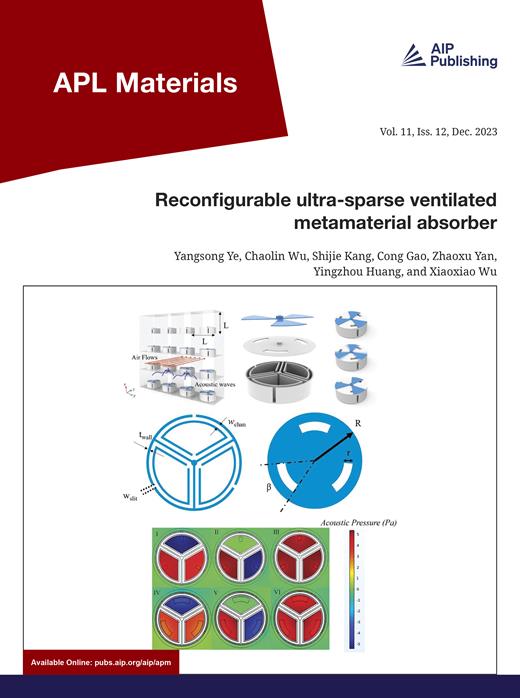Duality of a coiled phononic crystal enables reflectionless interfaces
IF 5.3
2区 材料科学
Q2 MATERIALS SCIENCE, MULTIDISCIPLINARY
引用次数: 0
Abstract
Recently, it has been demonstrated that one-dimensional bar-based phononic crystals can exhibit subwavelength Bragg bandgaps by coiling the bars and locking the nodal rotational degrees of freedom to create what is termed a coiled phononic crystal (CPnC) [C. L. Willey et al., Phys. Rev. Appl. 18, 014035 (2022)]. Here, it is shown that the CPnC exhibits duality of its dispersion curves relative to its coiling/twist angle, meaning that the dispersion curves are symmetric about a particular coiling/twist angle defined configuration. An exciting implication of this finding is that under a certain set of constraints, segments of dual unit cells with perpendicular wave propagation directions can be connected such that their wave transmission is equivalent to a finite CPnC entirely composed of identical unit cells with parallel wave propagation directions. The ability to link unit cells with different wave propagation orientations, but the same dispersion/dynamic stiffness, is used to create an elastic hierarchically coiled phononic crystal based on a fractal space-filling curve design. The novelty of this work is that it numerically demonstrates reflectionless wave propagation in large fractal architectures (created from specific combinations of dual unit cells) such that regular phononic properties (i.e., passbands and bandgaps) are preserved, allowing for propagation of broadband signals and filtering.盘绕声子晶体的双重性实现了无反射界面
最近,有研究表明,一维棒状声子晶体可以通过卷绕棒状物并锁定节点旋转自由度来产生所谓的卷绕声子晶体(CPnC),从而表现出亚波长布拉格带隙[C. L. Willey 等人,Phys.这里的研究表明,CPnC 的色散曲线相对于其卷曲/扭转角度具有二重性,这意味着色散曲线对于特定卷曲/扭转角度定义的构型是对称的。这一发现的一个令人兴奋的含义是,在一定的约束条件下,可以将波传播方向垂直的双单元单元连接起来,使它们的波传输等同于一个完全由波传播方向平行的相同单元单元组成的有限 CPnC。利用连接波传播方向不同但色散/动态刚度相同的单元格的能力,可以在分形空间填充曲线设计的基础上创建弹性分层盘绕声子晶体。这项研究的新颖之处在于,它以数值方式证明了波在大型分形结构(由特定的双单元格组合而成)中的无反射传播,从而保留了规则的声波特性(即通带和带隙),使宽带信号的传播和滤波成为可能。
本文章由计算机程序翻译,如有差异,请以英文原文为准。
求助全文
约1分钟内获得全文
求助全文
来源期刊

APL Materials
NANOSCIENCE & NANOTECHNOLOGYMATERIALS SCIE-MATERIALS SCIENCE, MULTIDISCIPLINARY
CiteScore
9.60
自引率
3.30%
发文量
199
审稿时长
2 months
期刊介绍:
APL Materials features original, experimental research on significant topical issues within the field of materials science. In order to highlight research at the forefront of materials science, emphasis is given to the quality and timeliness of the work. The journal considers theory or calculation when the work is particularly timely and relevant to applications.
In addition to regular articles, the journal also publishes Special Topics, which report on cutting-edge areas in materials science, such as Perovskite Solar Cells, 2D Materials, and Beyond Lithium Ion Batteries.
 求助内容:
求助内容: 应助结果提醒方式:
应助结果提醒方式:


